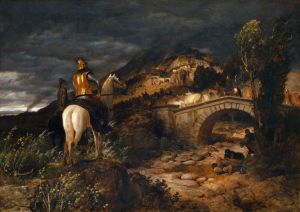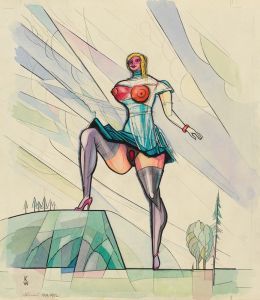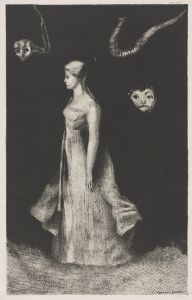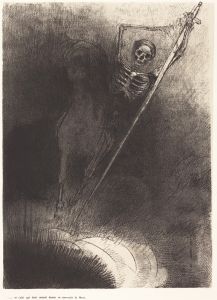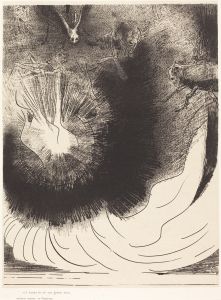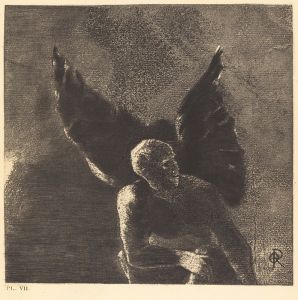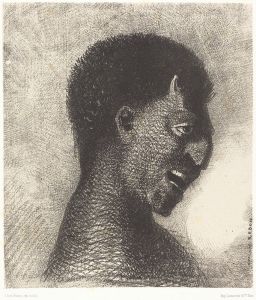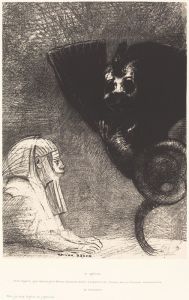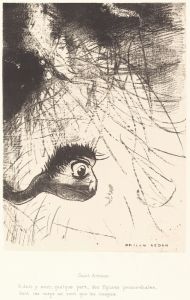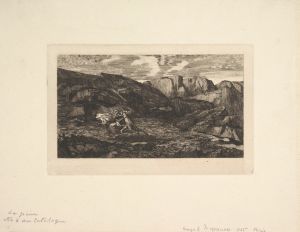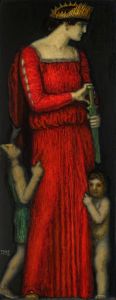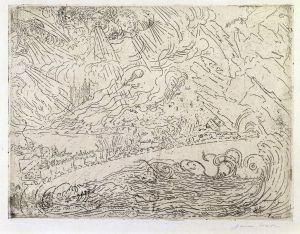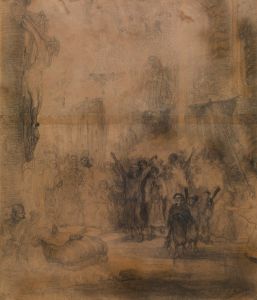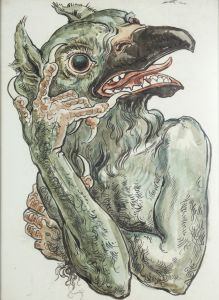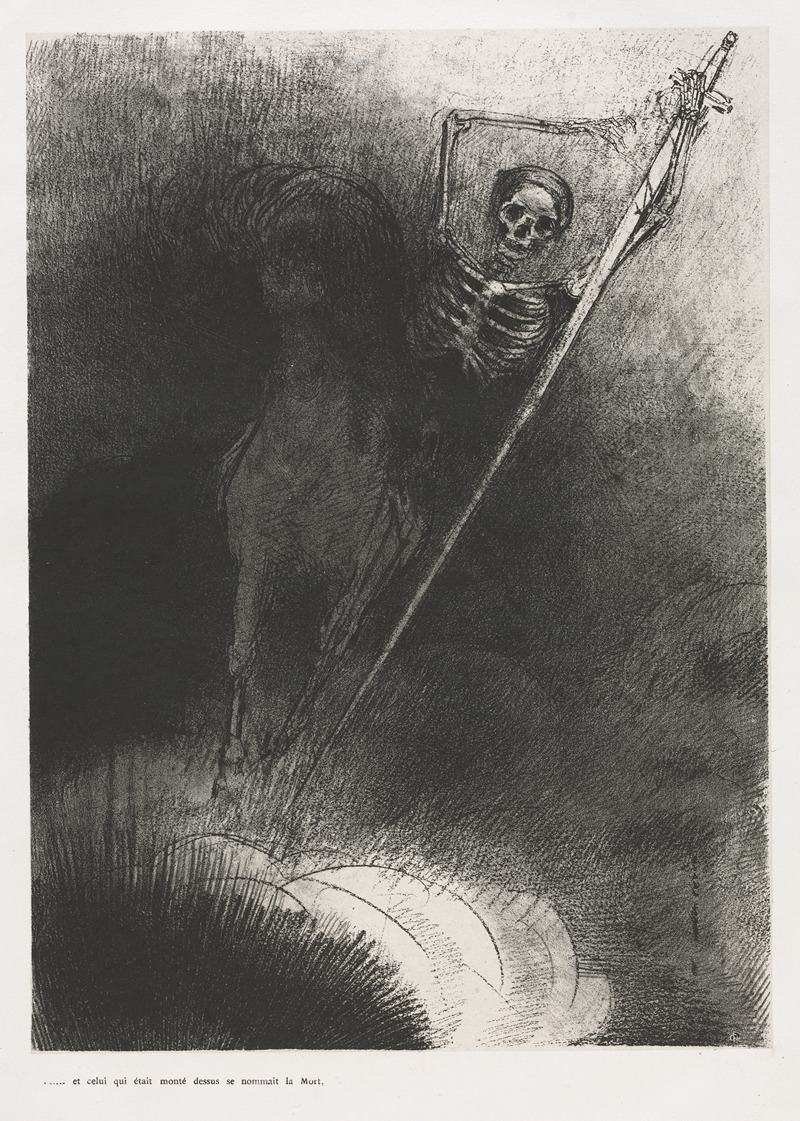
And His Name That Sat on Him Was Death
A hand-painted replica of Odilon Redon’s masterpiece And His Name That Sat on Him Was Death, meticulously crafted by professional artists to capture the true essence of the original. Each piece is created with museum-quality canvas and rare mineral pigments, carefully painted by experienced artists with delicate brushstrokes and rich, layered colors to perfectly recreate the texture of the original artwork. Unlike machine-printed reproductions, this hand-painted version brings the painting to life, infused with the artist’s emotions and skill in every stroke. Whether for personal collection or home decoration, it instantly elevates the artistic atmosphere of any space.
Odilon Redon was a French symbolist painter, known for his unique and imaginative works that often explored themes of fantasy, dreams, and the subconscious. One of his notable works is "And His Name That Sat on Him Was Death," which reflects his interest in mystical and existential themes. This painting is part of Redon's broader oeuvre that frequently delves into the darker aspects of human experience and the unknown.
"And His Name That Sat on Him Was Death" is inspired by the biblical text from the Book of Revelation, which describes the Four Horsemen of the Apocalypse. The passage refers to Death as one of the horsemen, riding a pale horse. Redon's interpretation of this theme is consistent with his symbolist style, which often incorporates literary and mythological references to explore complex emotional and philosophical ideas.
Redon's work is characterized by its use of vivid colors and dreamlike imagery, and this painting is no exception. Although specific details about the composition and style of "And His Name That Sat on Him Was Death" are limited, it is likely that the painting features Redon's signature use of ethereal and otherworldly elements. His works often include fantastical creatures, surreal landscapes, and a sense of mystery, inviting viewers to engage with the painting on an emotional and intellectual level.
Throughout his career, Redon was influenced by a variety of artistic movements and figures, including the Impressionists and the Nabis. However, he carved out his own niche within the symbolist movement, focusing on the exploration of inner worlds and the human psyche. His works are often seen as precursors to later developments in modern art, particularly surrealism, due to their emphasis on imagination and the subconscious.
Redon's interest in themes of death and the afterlife can be traced back to his early life and personal experiences. He was born in Bordeaux in 1840 and faced several challenges, including health issues and a difficult family life. These experiences may have contributed to his fascination with existential themes and the exploration of life's mysteries.
In addition to painting, Redon was also known for his work in other mediums, including lithography and pastels. His black-and-white lithographs, often referred to as his "noirs," are particularly famous for their haunting and enigmatic quality. These works further demonstrate his ability to convey complex emotions and ideas through visual art.
"And His Name That Sat on Him Was Death" fits within Redon's broader body of work that often grapples with themes of mortality, spirituality, and the unknown. While specific details about this painting are scarce, it is clear that it embodies the symbolist ethos of exploring the unseen and the intangible aspects of human existence.
Redon's legacy as an artist is marked by his ability to transcend the boundaries of traditional art and create works that resonate on a deeply personal and philosophical level. His paintings continue to captivate audiences with their rich symbolism and imaginative power, inviting viewers to ponder the mysteries of life and death.





